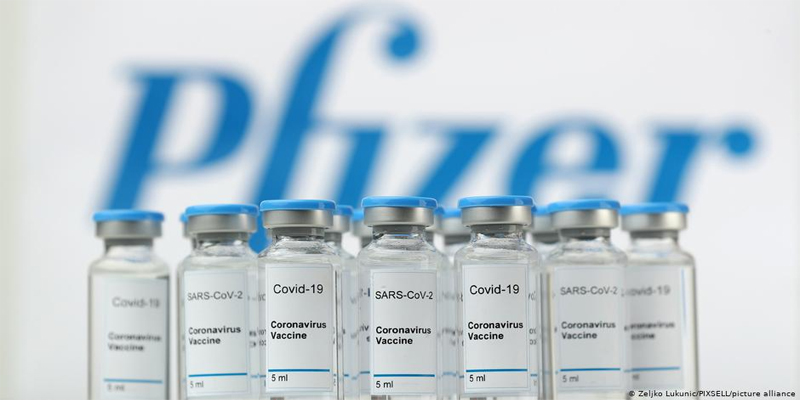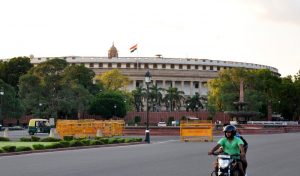Superspreading events, in which many people are infected at once, typically by a single individual, are a now-familiar feature of the COVID-19 pandemic. Marriages, funerals, family gatherings and gym and dances classes have all spawned dangerous outbreaks, according to a report in Nature.
Akira Endo, an infectious-diseases modeller at the London School of Hygiene & Tropical Medicine, noticed the telltale signs of superspreading before such events became a staple of COVID-19 news coverage. One clue came from early investigations of cases in which a single person infected up to ten others. Another curious fact was that outside Wuhan, China, home to the first big outbreak, infected individuals weren’t immediately causing exponential local outbreaks, says Endo, who was one of the earliest to quantify the phenomenon.
This uneven, sputtering form of transmission, in which some individuals infect many people but most infect only a few, if any, is shared by the coronavirus’s cousins — SARS-CoV, which caused the deadly epidemic of severe acute respiratory syndrome (SARS) in 2003, and MERS-CoV, the source of Middle East respiratory syndrome. A similar mode of transmission occurs with the pathogens that cause Ebola, smallpox and tuberculosis.
As the pandemic enters its second year — a time marked by news of fast-spreading variant of the virus — researchers are now more convinced than ever of the importance of superspreading in how the COVID-19 pandemic has played out, and how it will do so in the future. They have found that superspreading events are one of the main ways in which SARS-CoV-2 has gained a foothold in communities around the world, so far infecting more than 100 million people and killing more than 2.4 million. Without effective control measures, superspreading events might even become larger and more frequent as more-transmissible variants first identified in the United Kingdom, South Africa and Brazil push out other strains of the virus.
Why many countries failed at COVID contact-tracing — but some got it right
With a year’s worth of data, researchers have amassed ample evidence of some chief ingredients of superspreading events: prolonged indoor gatherings with poor ventilation. Activities such as singing and aerobic exercise, which produce many of the tiny infectious droplets that can be inhaled by other, are also common components.
But key questions remain. “We have some ideas of what factors are involved, but we still don’t know what is the main driver of the superspreading,” says Endo. Foremost are uncertainties about how much individual differences in people’s behaviour and biology matter — or can be controlled — and how best to target high-risk settings while keeping the cogs of society turning. Understanding the underlying factors that drive superspreading is crucial, says Lucy Li, an infectious-diseases modeller at the Chan Zuckerberg Biohub in San Francisco, California.
Experts say that we already know enough about the main factors of superspreading to use this phenomenon to our advantage. They are calling on policymakers to harness this knowledge to target control measures that will slow — or even stamp out — the pandemic. One of the most basic steps is closing crowded, indoor hotspots to prevent superspreading events. Researchers also recommend following Japan’s lead, by using backwards contact tracing to uncover superspreading events.
Explosive transmission
On average, each person who contracts SARS-CoV-2 will pass it on to between two and three others. But that tidy population-level estimate — known as the basic reproduction number — hides immense variation at the individual level. In reality, most infections arise from just a handful of people (see ‘Infection connections’). Endo’s early analysis estimated that around 10% of cases in countries outside China accounted for 80% of secondary infections up to the end of February2.
Estimates from places such as Israel, India, Hong Kong and other parts of China back up this observation. And although this pattern occurs in other infectious diseases, it is especially pronounced in COVID-19. Influenza, by contrast, has less individual variation, says Endo, and tends to spread more evenly.
The upshot of superspreading is that a few infections can rapidly blossom into a raging outbreak, says Li, who has studied the phenomenon in locations across the United States, Europe and China. “If you have a chain of superspreaders, then the cases could explode in a really short period of time,” she says.
New variants of SARS-CoV-2 that first attracted attention in the United Kingdom, South Africa and Brazil could make superspreading worse, says Li. On the basis of a reported 50% higher transmission rate in a variant called B.1.1.73, “there will likely be an increase in both the frequency and size of superspreading events”, she says.
A team led by Bronwyn MacInnis, a geneticist at the Broad Institute of MIT and Harvard in Cambridge, Massachusetts, traced the impact of superspreading events using viral genome sequences. One superspreading event — a two-day international business conference held in Boston in late February 2020 — seeded more than 90 cases in attendees and their close contacts4. But the true impact was much greater, says MacInnis. She estimates that roughly 20,000 infections in Boston and its surrounding areas could be traced back to the conference.
Are there superspreaders?
Although a few people account for the lion’s share of transmission, researchers are still teasing out whether some people have biological factors that cause them to pass the virus to many others. For instance, some individuals naturally speak louder or expel more air when they exhale. So they would naturally emit more aerosols — the tiny virus-laden particles that travel through the air, says Christian Kähler, a physicist who studies aerosol production and dynamics at the University of the Federal Armed Forces in Munich, Germany. Also, children and women tend to emit less than men owing to their smaller lung capacities, says Kähler.
But he and other researchers are sceptical about biological differences beyond that. “The belief in the super-emitter, that’s too simple,” he says.
Kähler thinks that a person’s behaviour — whether they fail to keep a safe distance from others during conversations, say, or refuse to wear a mask — is much more likely to heighten transmission risk than is the amount of aerosol they emit. Actions such as singing and shouting also boost that amount, he says. Estimates suggest that speaking loudly can increase the number of particles emitted by up to 50 times compared with normal speaking5, and singing can produce up to 99 times more, according to a study that has not been peer reviewed.
Individual variation in immune responses could affect how much virus a person produces, says virologist Dominic Dwyer at NSW Health Pathology, the state’s public pathology service, in Sydney, Australia. Differences in how young children’s immune systems respond to infection are thought to be why they catch and pass on the coronavirus less frequently than adults do. It’s possible that a spectrum of immune responses exists in adults, too, says Dwyer. At the far end of the spectrum, “if somebody is immune-suppressed, then generally they’re more likely to shed more virus for longer”, he says.
A study of aerosol emissions from nearly 200 healthy people, published this month, lends weight to the idea that biological differences could affect transmission of the virus. The measurements showed that 20% of the study participants accounted for 80% of the aerosol particles emitted, and that people who were older or overweight produced more aerosols than others.
But researchers using mathematical modelling to chart outbreaks say they don’t need to invoke biological differences to explain superspreading events. In a study9 that is yet to be peer reviewed, physicist Mara Prentiss at Harvard University in Cambridge, Massachusetts, and her colleagues calculated how many viral particles were emitted by a single infected person at each of five superspreading events, the report said.





























